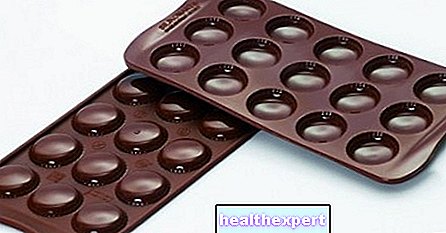Massage therapy: everything you need to know about therapeutic massage for muscle and joint pain
Massage therapy is a manipulation of soft tissues by a specialist. It is a simple technique that finds multiple applications in the aesthetic, sports or physiotherapy fields. The manual massage can be used to reduce or eliminate muscle tension or even real pain.
Before continuing and delving into the theme of beneficial massages, watch the video below with a decidedly weird massage.
What is massage therapy and when is it performed
The important thing is to carry out the massage therapy maneuvers in a relaxing context that allows the patient to let go of the beneficial effects of the massage. In fact, massage therapy, also called manual massage, includes very different movements and maneuvers capable of acting on different aspects of the body. These movements are performed by the hands of the therapist who massages the soft tissues and connective tissues of the patient, in a specific and delineated area or in a wider area, over all. The main benefits of massage therapy are to relieve discomfort and pain caused by incorrect posture, by trauma and in many cases also by stress. It can soothe muscle or joint pain and help the patient regain better mobility following rehabilitation. But what does massage therapy mean? The word indicates the therapy that takes place through massages. Specifically, the word massage derives from the Arabic MASS which means to touch, to touch gently. Also in Greek we find a similar root, the verb Massein, it means to knead or rub. The massage, as we will see, has many benefits and has been practiced as if it were a magical art to spread its beneficial effects. Think that massage as a therapy was already practiced in 2.000-3.000 BC in Ancient Egypt! But massage therapy is not improvised: it also has some contraindications to which it is good to pay attention !
See also




Benefits of massage
Massage therapy was first theorized by the Swedish physiotherapist Pehr Henrik Ling who laid the foundations for this discipline and unveiled and cataloged the various manual techniques. It is important to know the different massage techniques and not to improvise so as not to cause harm to the patient. The massage is able to act on a physical level but also on a psychological level, contributing to the relaxation of the patient. What is massage therapy used for? The massage warms the muscles and stimulates them, as well as calming the nervous system with an analgesic effect capable of making
elastic skin and relaxed muscles. In addition, the massage also manages to eliminate toxins, therefore it performs an important detox function for our body. Of course, massage is a powerful universal therapeutic tool, recognized and practiced for centuries to give relief in case of bone, rheumatic, neurological or central system problems such as insomnia, exhaustion or stress.
Very often, to make the practice more active and pleasant, cosmetic products are used that with their scent calm and relax and thanks to the oily or creamy texture they reduce friction making the massage even more beneficial to also improve the perception of the patient during the session. . Discover the best cosmetic products, the most popular treatments for a beautiful relaxing message and the most suitable natural oils for manual massage such as eucalyptus essential oil or lemon essential oil. Other very good natural oils are the essential oil of rosemary or mint.

Type of massages and massage therapy maneuvers
Depending on the way of touching and the movement exercised by the specialist, the massage takes on different names. Effleurage is the superficial contact with the skin, through circular or longitudinal movements that characterize the treatment. It is a superficial maneuver that affects the outermost tissues of the body and does not require pressure. Maneuvers with pressure, on the other hand, also reach deep into the vascular system and muscles. Effleurage is always used at the beginning and at the end of the treatment, it warms the tissues and allows the therapist to establish physical contact and trust with the patient. This type of massage regenerates the skin and has a beneficial and relaxing effect with a mild sedative action. Depending on the depth with which it is performed, it can also have a decontracting action and contribute to the improvement of both blood and lymphatic circulation. Another maneuver of massage therapy is the Pétrissage which consists in the energetic squeezing of the soft tissues, moving and detaching them from the surface, usually with a twist that acts at the level of the muscle fibers. Pétrissage helps to fortify the muscle and eliminates toxins from the body. With the hands the therapist can also perform a friction, with small controlled movements performed with the fingertips. This movement is typical of massages for the well-being of the joints. The frictions also cause psychological well-being in the patient because they give an analgesic and relaxing effect to the treatment.
Other techniques widely used by specialists are Percussion, very energetic maneuvers based on strokes of different intensity but with constant pressure. This massage is vigorous and manages to stimulate the tissues by producing energy. Percussion improves muscle tone and nourishes the muscle, acts as a stimulus for the patient's mobility. Finally, in some cases the therapist can also perform vibrations. In this case the physiotherapist performs rapid and short movements of an oscillatory nature. This technique requires energy and expertise on the part of the physiotherapist but brings many blessings such as muscle relaxation and circulation stimulation. It is proven that the vibrations also help the detachment of bronchial secretions.There are a great variety of massages, including aesthetic ones, that are practiced according to the techniques of massage therapy. Massages such as Chinese, Shiatsu, Thai, Japanese massage, foot reflexology, sports manipulation and many others.

When massage is contraindicated
Probably the idea of a good taste always tempts us but it is important to know that in some cases even a massage can be harmful or worsen the pain. First of all it should be noted that the massage must be carried out by expert personnel as well, by a therapist who has studied physiotherapy: better never rely on those who are not experts! Always focus on professional treatment and carefully select operators. Remember that even a well done massage can have side effects and lead to swelling, bruising or allergic reactions to the natural oils used during the session. In any case, it is not recommended during pregnancy, in case of osteoporosis, fractures, wounds and recent surgery. Even when an area is affected by cancer it should not be subjected to massage.
![]()

-shopping.jpg)

